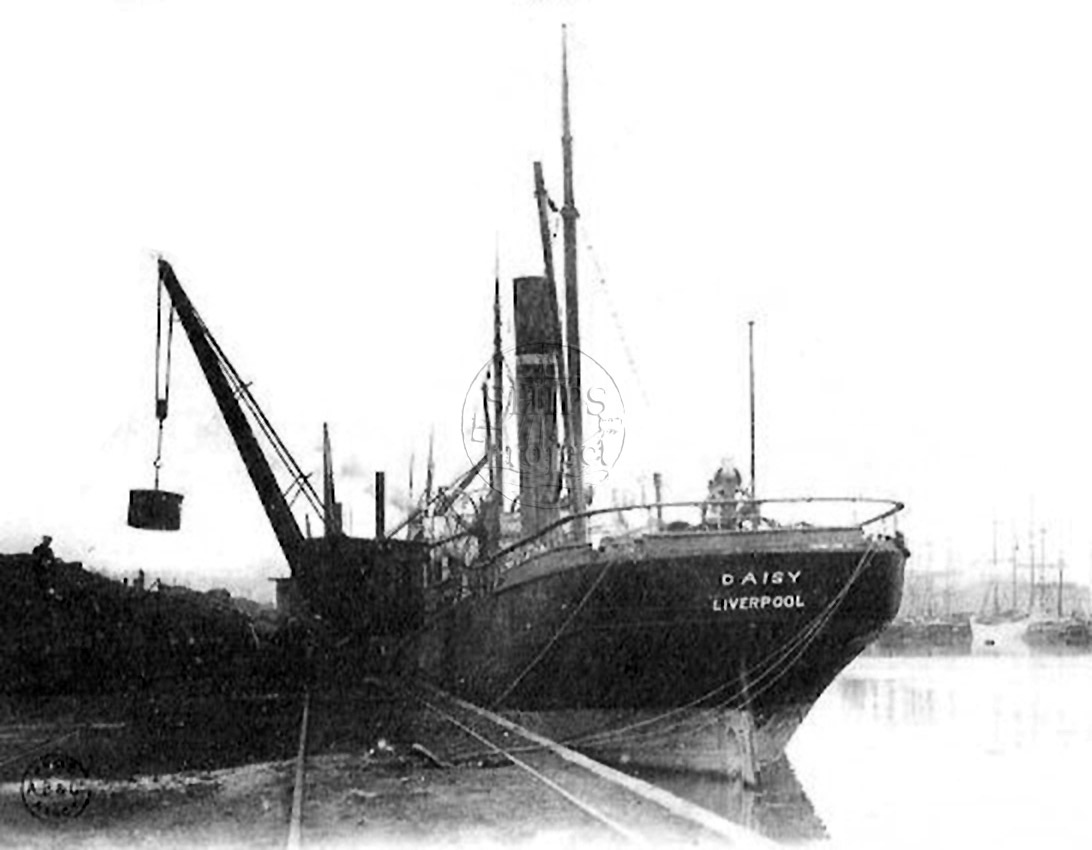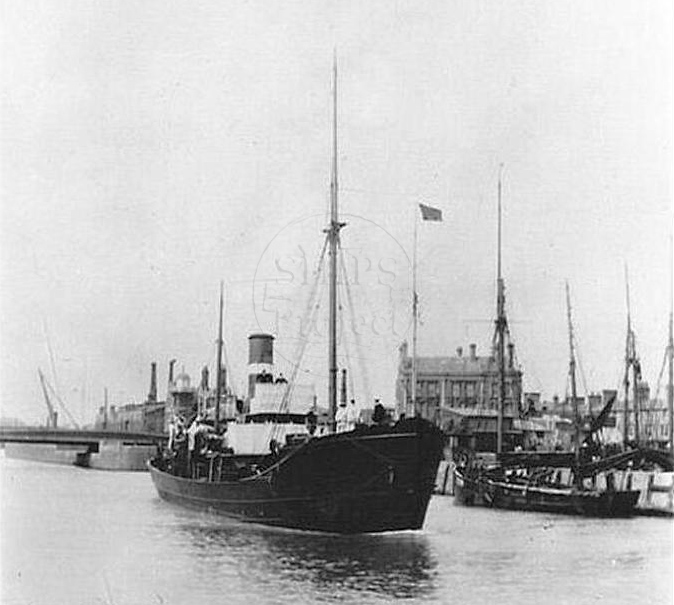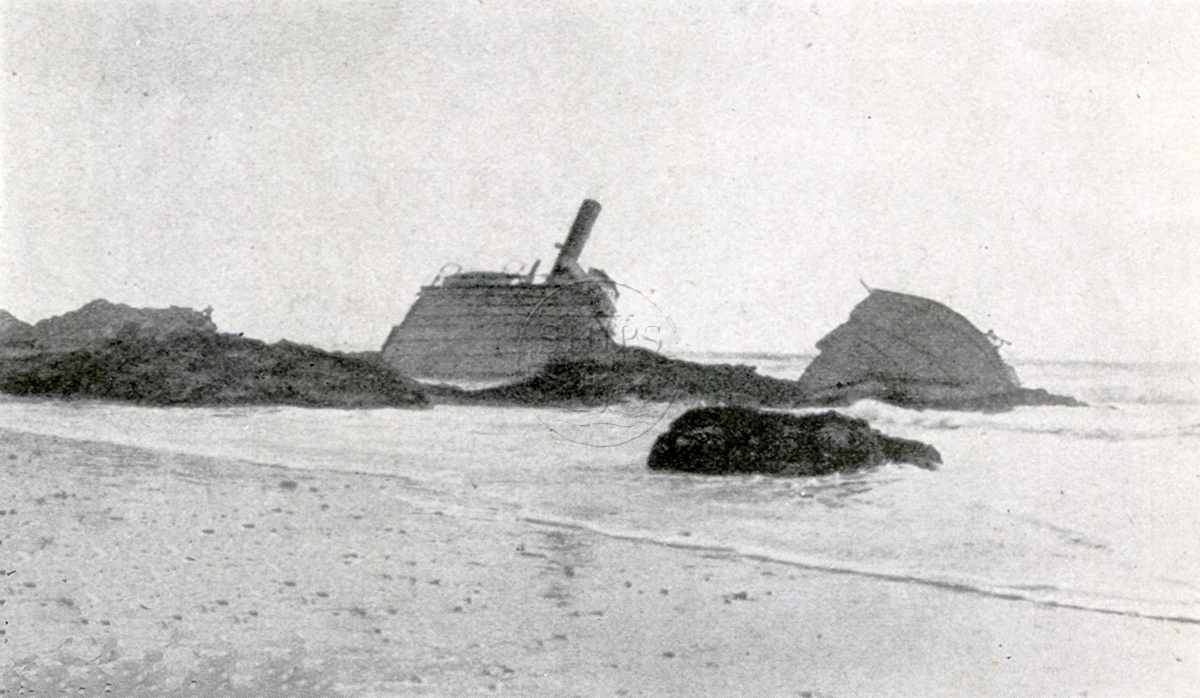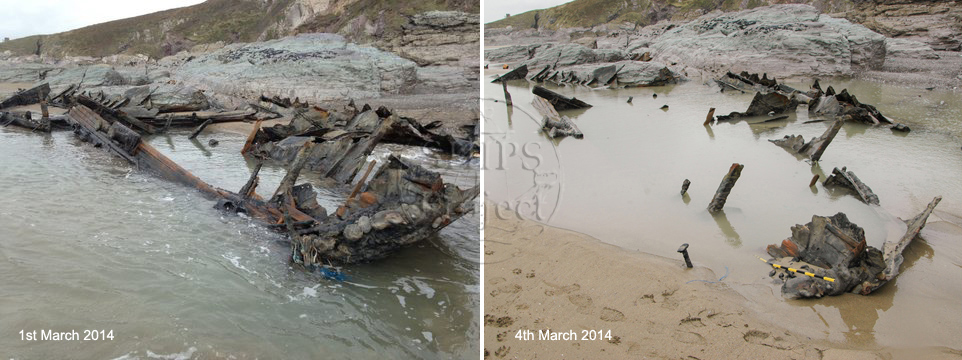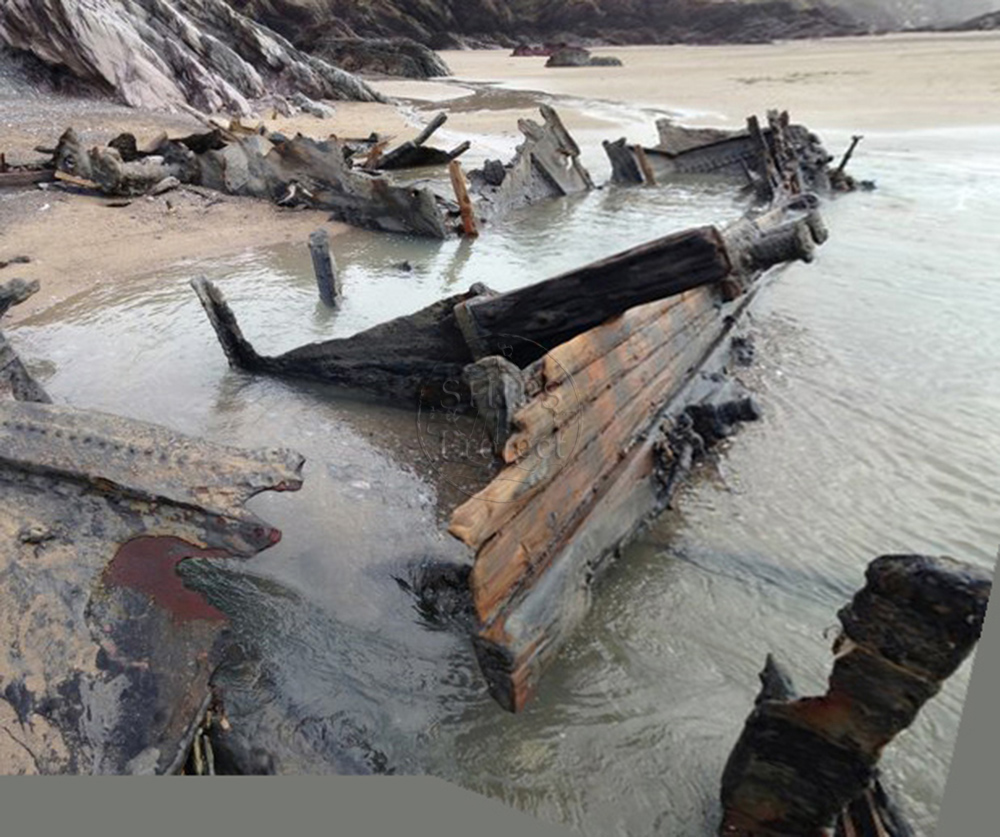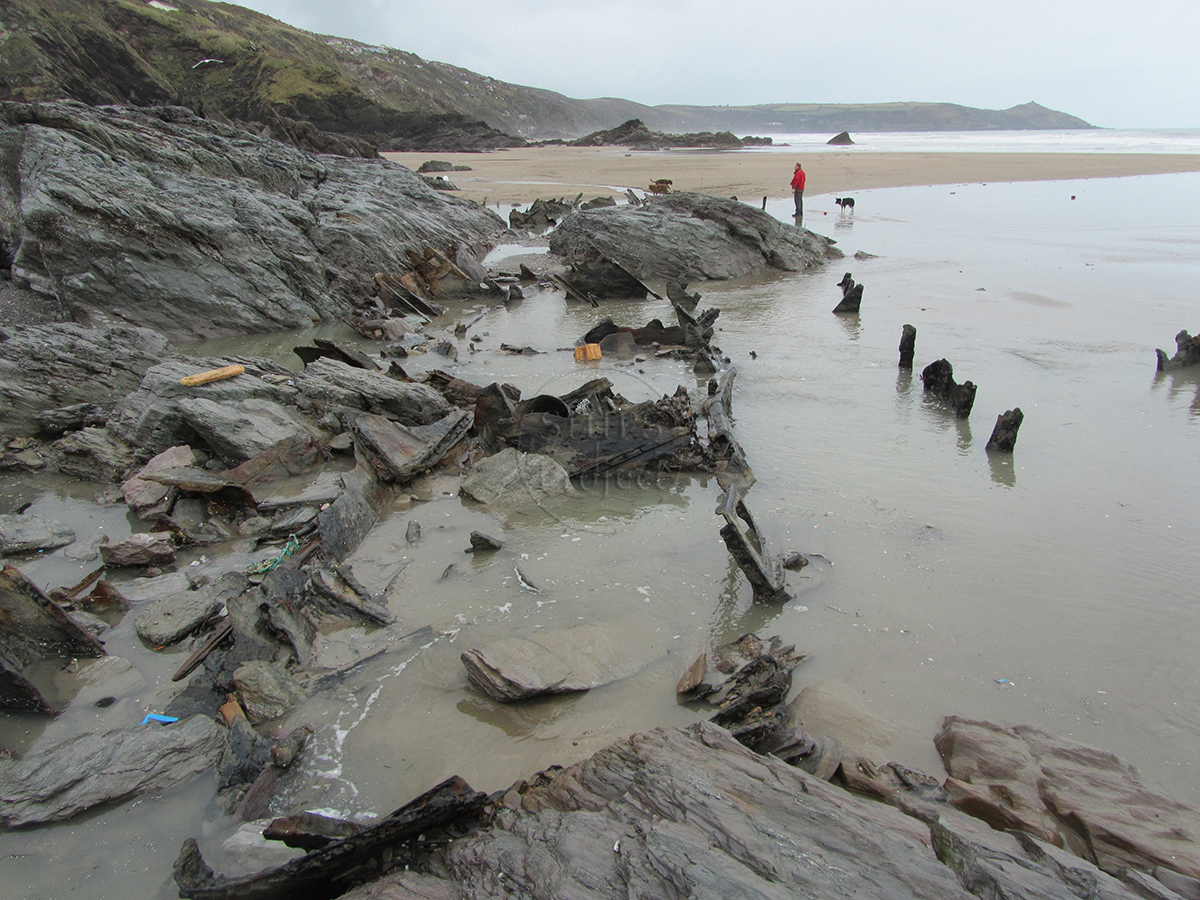Not Set
The remains of the steam coaster Daisy first appeared on Freathy beach in 2014 after having wrecked in 1903.
Type
Steamship
History
The steam coaster Daisy was originally the Emerald, built in 1872 by the Short Brothers shipbuilders in Sunderland, England, and she was one of the first iron-hulled ships to be built by the company. The Emerald was 66m (217.8ft) long with a breadth of 6.3m (20.7ft) and a depth in hold of 5m (16.5ft), with two decks and five watertight bulkheads, built for her original owners Weatherley & Co. The ship was fitted with a 98 hp steam engine and a single screw but she was also had masts and sails and was rigged as a schooner.
Between 1877 and 1882 Emerald was operating from the port of Sunderland on the Baltic and coastal trade under the command of captain Andrew Scott. By 1893 she was owned by Donald & Taylor, Glasgow. On 13th May 1895 the Emerald rammed and sunk the British steamship Maritana of Sunderland in thick fog off the north-west coast of France. The master of the Emerald, Mr. David Robb, was found to be at fault by the Board of Trade as the Emerald was not navigated with proper and seamanlike care. In 1897 the Emerald was bought by Richard Hughes & Co. of Liverpool and renamed the Daisy.
Shortly after midnight on Friday 27th February 1903 on a voyage from Dieppe to Penarth in ballast, the Daisy was driven ashore at Freathy in Whitsand Bay, Cornwall. The Daisy had been sheltering in Plymouth Sound the day before but the stormy weather had moderated so her captain left port and headed down the English Channel. A few hours into the voyage a severe south-westerly gale sprang up, the captain attempted to turn around and return to the safety of Plymouth Sound but the ship became unmanageable in the rough seas and she was eventually blown on shore in Whitsand Bay. The Looe lifeboat Ryder was called to the scene, the first service call for the new vessel since her arrival in 1902. There was a very strong wind, it was very dark and with heavy rain when the Ryder launched at 2:40 in the morning. The lifeboat made its way under sail through the heavy weather towards the stranded ship. Some way into the journey the recall signal was seen, as by then the 14 men on board the Daisy had been recovered from the shore by Portwrinkle coastguard rocket apparatus and breeches buoy. The lifeboat made its way back to Looe and Coxswain Toms reported that the new lifeboat had behaved very well, in spite of the heaviest sea that he had ever experienced, the Ryder at times nearly standing on end.
The Daisy ended up on the beach lying parallel to the shore, broken in three places and with both masts overboard. Over the next few days the ship was broken up by the heavy seas and her fittings washed ashore. The local representative on the scene considered her not worth the expense of salvaging and recommended that she was put up for sale as scrap. The engines and boilers appear to have been salvaged but a large part of the ship disappeared under the sands of Freathy beach.
Please get in touch if you have any information about this vessel by sending us a message below.
Description
The remains of the Daisy can be found on the seaward side of the rocks at Freathy Cliff, just to the east of Sharrow Point, at the foot of the path that leads down the cliff at Freathy. The wreck is usually completely buried in sand but it uncovered briefly in the fierce storms if February 2014. Roger Collins from the Rame Peninsula History Group alerted the SHIPS Project to the appearance of the wreck on the beach on 1st March, but three days later when we visited the site the sand had already started to bury her.
The remains of the ship still lie parallel to the shore, heeled hard over on her port side and lying up against the rocks. The photograph of the ship from 1903 shows the bow to the west separated from the main body of the wreck, with the stern broken away. Amongst the wreckage can be seen many iron plates held together with large rivets, the frames of the ship, bollards, wooden decking, a Sampson post, remains of wire rigging, the chain locker and a broken hawse pipe. The four-bladed propeller with one blade broken off can also still be found in the stern section.
Location and Access
Whitsand Beach, under Freathy.
Nearby wrecks include the dive tender Emma Christ ![]() , unknown wooden ship Whitsand 2
, unknown wooden ship Whitsand 2 ![]() and the steam trawler Chancellor
and the steam trawler Chancellor ![]()
Last updated 03 Jan 2021
Information
Date Built:
1872
Type:
Steam coaster
Builder:
Short Brothers, Sunderland, England, yard no 49
Official Number:
62649
Length
66m / 217.8ft
Beam
6.3m / 20.7ft
Depth in Hold
5.0m / 16.5ft
Construction
Iron
Propulsion
Steam engine, 2 cylinder compound, direct-acting with surface condensers, 98 hp, built by George Clark, single screw, schooner rigged
Tonnage
942 GRT, 575 net
Portmarks
None
Outcome
Wrecked 1903
Reference
Unknown
Daisy Appears in 2014
An old iron shipwreck appeared above the sand on Freathy beach after a particularly violent storm on 1st March 2014. Whitsand residents Bill Honey and Roger Collins from the Rame Peninsular History Group asked The SHIPS Project for help in identifying the ship. Checking through their database, the SHIPS team found she was called the Daisy then located a picture of her wrecked on the beach. Photographs of the wreck taken when she appeared showed a considerable amount of structure had been exposed, but when the SHIPS team managed to get over to record the wreck most of the wreck had covered over and she disappeared again under the sand a few days later (Figs 4, 5, 6)
The wreck was partially exposed again in January 2020 but again only briefly.
Not Set
Leave a message
Your email address will not be published.
Click the images for a larger version
Image use policy
Our images can be used under a CC attribution non-commercial licence (unless stated otherwise).


